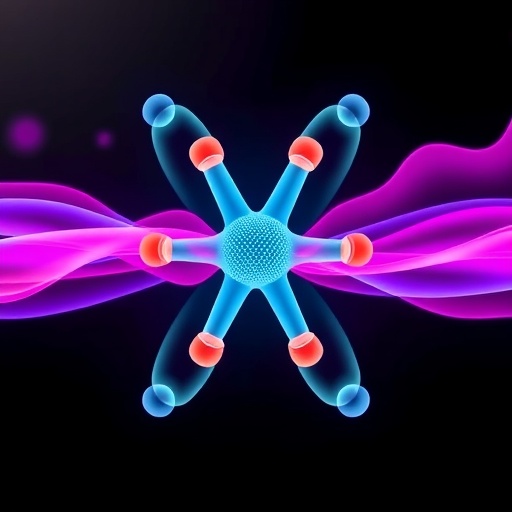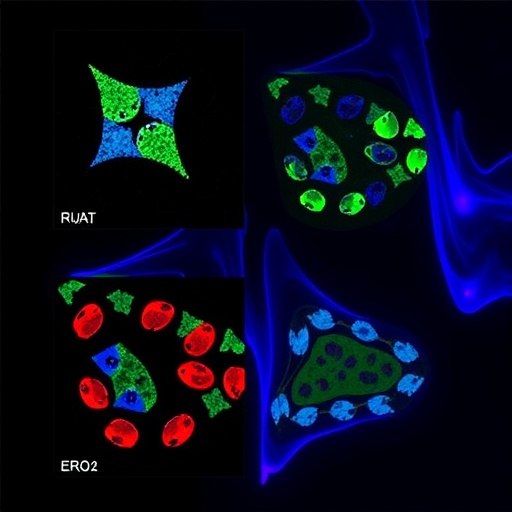
In the quest for cleaner and more efficient metal production, as well as advanced catalytic and energy technologies, understanding the fundamental mechanisms of oxide reduction is crucial. Despite the widespread use of carbon monoxide (CO) and hydrogen (H₂) as reductants, the distinct atomic-level pathways these gases follow during oxide reduction have remained largely enigmatic. New groundbreaking research now reveals how these common reductants influence metal oxide transformation in fundamentally different ways, with profound implications for metallurgy, catalysis, and sustainable energy applications.
Metal oxides, such as nickel oxide (NiO), serve as pivotal precursors in diverse industrial processes. Traditionally, the reduction of these oxides—converting the metal oxide back to metallic form—has been presumed to proceed via comparable mechanisms when using CO or H₂. Both gases are thought to remove lattice oxygen atoms, thus returning the metal to its elemental state. However, as industries pivot toward cleaner alternatives like hydrogen to mitigate carbon dioxide emissions, disentangling the precise, gas-specific reduction pathways has become increasingly essential.
Until recently, directly observing these atomic processes under realistic, high-temperature conditions and reactive gas environments was a significant technological barrier. Conventional surface science techniques lack the spatial and temporal resolution to capture the dynamic and transient interfacial transformations occurring during oxide reduction in situ. Now, the advent of environmental transmission electron microscopy (ETEM) has radically transformed this landscape. ETEM combines atomic-resolution imaging with controlled gas atmospheres and elevated temperatures, enabling real-time visualization of gas-solid redox reactions at the scale of individual atoms.
.adsslot_k6EetZsDvS{width:728px !important;height:90px !important;}
@media(max-width:1199px){ .adsslot_k6EetZsDvS{width:468px !important;height:60px !important;}
}
@media(max-width:767px){ .adsslot_k6EetZsDvS{width:320px !important;height:50px !important;}
}
ADVERTISEMENT
Employing this cutting-edge technique, researchers led by Chen et al. turned their investigative lens on NiO subjected to reduction in CO and H₂ atmospheres. The atomic-scale movies revealed strikingly different behavior depending on the reductant. Under CO, metallic nickel islands emerged suddenly on the NiO surface, nucleating and growing rapidly but in a manner confined almost exclusively to the surface. This limited penetration resulted in a self-limiting surface metallization, where the newly formed metallic layer effectively encapsulated the oxide beneath, preventing further reduction.
In stark contrast, hydrogen reduction involved a complex and deeply coupled surface-to-bulk transformation. When H₂ molecules dissociated on the NiO surface, protons infiltrated the oxide lattice, facilitating the migration of oxygen vacancies from the surface into the bulk of the material. This proton-assisted migration allowed a more extensive bulk metallization process, signaling a profound mechanistic divergence from CO-assisted reduction. Rather than merely modifying the surface, hydrogen drove a propagation of reduction fronts inward, effectively transforming the oxide throughout its volume.
These findings illuminate previously obscured atomic-scale phenomena, establishing that the behavior of oxygen vacancies—the atomic-scale “holes” left when oxygen atoms are removed—is radically different depending on the reducing gas. CO-generated oxygen vacancies remain predominantly at or near the surface, enabling rapid localized reduction but blocking further inward transformation. Hydrogen, however, leverages proton mobility and vacancy migration enabling a volumetric reduction that could have substantial effects on catalytic activity, material stability, and process efficiency.
The implications of these discoveries are far-reaching. For metallurgical processes, where precise control over reduction kinetics and depth is vital, selecting the appropriate reductant gas can dramatically alter the microstructure and performance of the resulting metal. Similarly, catalyst developers now have atomic-level insight into how reducing environments shape the active metal-oxide interfaces, potentially unlocking routes to tailor catalysts at the atomic scale for enhanced activity and longevity.
Beyond the immediate findings, the research also exemplifies the power of in situ atomic-scale environmental microscopy to unveil dynamic, gas-dependent atomic transformations. Such techniques hold promise across a spectrum of materials science fields, from corrosion science to semiconductor processing, where gas-solid reactions govern performance and reliability.
Moreover, this study’s revelation about hydrogen’s role in enabling bulk metallization via proton-assisted vacancy migration may inspire fresh strategies in energy technologies like solid oxide fuel cells and hydrogen storage materials. Understanding how protons interact with oxide lattices under reactive conditions may lead to materials engineered with superior durability and reduced degradation.
The contrast between CO’s surface-limited and H₂’s bulk-promoting reduction mechanisms also echoes broader themes in catalysis—where the interplay between surface chemistry and bulk properties dictates activity patterns. This insight could bridge current gaps in explaining why some catalysts perform better under hydrogen atmospheres, while others excel with CO, providing a fundamental basis for designing next-generation catalytic systems.
Fundamentally, these findings underscore the nuanced and unique chemistry presented by different reductant gases at the atomic level, challenging simplistic assumptions of interchangeable roles for CO and H₂ in oxide reduction. Deciphering these subtleties fosters a more holistic understanding vital for pursuing sustainable industrial processes that minimize environmental impact while maximizing efficiency.
By capturing, in real-time, the atomistic choreography of oxygen removal and nickel formation during reduction reactions, this work advances our grasp of redox phenomena from an abstract, thermodynamic perspective to a tangible, mechanistic picture. Future research may expand on these foundations to explore other metal oxides, reductants, and environmental variables, broadening the horizon for tailored oxide reduction routes.
In summary, the atomic dynamics unveiled by Chen and colleagues represent a major leap forward in materials science. Demonstrating that CO and H₂ steer oxide reduction through fundamentally divergent pathways not only helps refine industrial reduction strategies but also enriches our conceptual framework of gas-solid interactions. Such knowledge is poised to impact metal production, catalysis, and energy materials design in the era of sustainability.
As the global push accelerates toward hydrogen economies and decarbonized industrial processes, such atomically resolved insights become increasingly urgent and valuable. This research sets a new standard for how in situ microscopy and gas-solid chemistry can combine to unravel the mysteries of reactive materials transformations at the smallest scale, guiding technology innovation across multiple domains.
The future of oxide reduction science is now unfolding at the level of individual atoms and molecules, and thanks to advancements like environmental transmission electron microscopy, we are beginning to truly witness and understand this intricate dance. This atomic-level revelation marks an exciting turning point where detailed mechanistic knowledge can be harnessed to engineer materials and processes for a cleaner, more efficient future.
Subject of Research:
Atomic-scale mechanisms of gas-dependent oxide reduction in nickel oxide (NiO).
Article Title:
Atomic dynamics of gas-dependent oxide reducibility.
Article References:
Chen, X., Wang, J., Patel, S.B. et al. Atomic dynamics of gas-dependent oxide reducibility. Nature (2025). https://doi.org/10.1038/s41586-025-09394-0
Image Credits:
AI Generated
Tags: advanced materials researchatomic-level observation techniquescarbon monoxide in metallurgycatalytic processes in metal productioncleaner metal production technologiesgas-specific reduction pathwayshigh-temperature gas interactionshydrogen as a reductantmetal oxide transformationnickel oxide reductionoxide reduction mechanismssustainable energy applications





